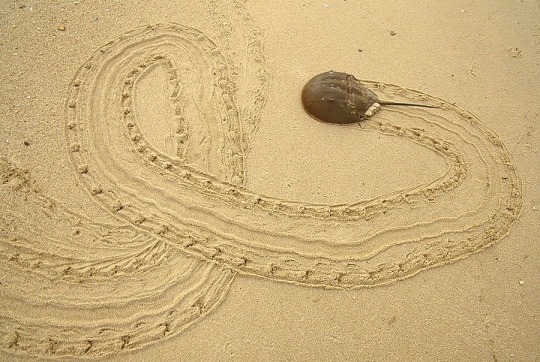Sailorpark livin until she's seaworthy again. Living aboard the periphery of your world
Last active 60 minutes ago
Don't wanna be here? Send us removal request.
Text
120K notes
·
View notes
Text
145K notes
·
View notes
Text
look at this wonderful gif of scallops getting scared and scattering like a flock pigeons
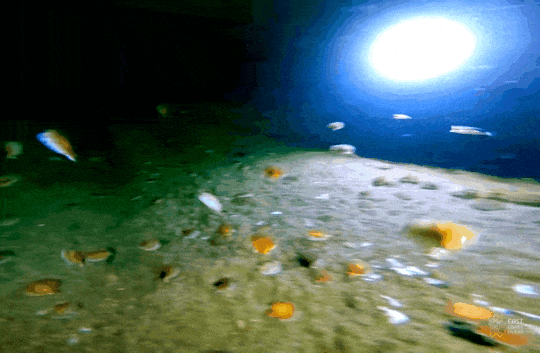
63K notes
·
View notes
Text
World surpasses 40% clean power as renewables see record rise

This is from the Global Electricity Review 2025 by Ember. Although this isn't something you are going to see in newspaper headlines, the progress we made with renewables in 2024 is a pretty big deal and if you're someone who likes a lot of data and graphs it's really worth reading.
I'm going to leave this video here because Hank Green does a better job of covering it than I am going to.
youtube
"This to me feels like news. It feels like a big deal. It feels like things are changing, like we are hitting a moment with electricity generation that really does matter. And over the next five years we will hit the point where we are generating less and less energy with fossil fuels every year. That's great. And that's not news. I didn't see anyone covering this [...]. It's not news because it's not bad and it's also not news because it's not like 'we did it, we hit the moment!'."
I think this quote from Hank's video does a good job of encapsulating how the slow, gradual progress that is happening often doesn't make it into the news--because it's not a dramatic emergency or a "we did it, we fully solved climate change!" kind of moment that makes for good headlines.
But that then gives people the idea that we're hardly making any progress on addressing climate change, which is not true at all. The fact that we need to continue to double-down on this progress to do it more and faster does not negate that so much progress has already been made.
3K notes
·
View notes
Text
I love how humans have literally not changed throughout history like the graffiti from Pompeii has people from hundreds of years ago writing stuff like “Marcus is gay” “I fucked a girl here” “Julius your mum wishes she was with me” and leonardo da vinci’s assistants drew dicks in their notebooks just for the banter and mozart created a piece called “kiss my ass” so when people wish for ‘today’s generation’ to be like ‘how people used to’ then we’re already there buddy we’ve always been
1M notes
·
View notes
Text
STARTING TOMORROW

Scientists in weather and climate are live streaming for 100 hours to make their case to the American public.
They are live streaming, but engagement is necessary for it to work. SHARE THIS WITH PEOPLE, RECORD THE STREAM, POST CLIPS OF IT THAT ARE FUNNY, if you can tune in, PLEASE DO!

This is something that has to be heard by as many people as possible. Put it on in the background! See if you can get other people to watch it! Do whatever you can do support those who are trying to be supported! Anything and everything helps!
TUNE IN HERE
article I posted screenshots of here
71K notes
·
View notes
Text
"If you're hoping that reef-restoring coral larvae will settle down in damaged reefs, you can't just sit around and wait for it to happen. You have to get out there and entice the larvae, which is exactly what a new algae-based gel is designed to do.
While we may think of coral reefs' "skeletons" as being composed solely of calcium carbonate produced by coral polyps, much of the material is in fact generated by what are known as crustose coralline algae.
Along with contributing greatly to the structural integrity of reefs, the algae-produced calcium carbonate also serves as a home to planktonic coral larvae. Once those formerly free-swimming organisms settle in and become polyps, they start producing reef-building calcium of their own.
It's a good arrangement for the coral, but it also benefits the algae.
Not only does the reef itself provide the algae with protection from the elements, the coral polyps also emit ammonia which the algae feed upon. It is therefore in the algae's best interest to entice any coral larvae that may be swimming past in the water column. In order to do so, the algae release metabolite chemicals that attract the larvae.
Led by Dr. Daniel Wangpraseurt, scientists at UC San Diego's Scripps Institution of Oceanography have now incorporated those metabolites into a gel that can be applied to degraded coral reefs. Called SNAP-X, the substance reportedly boosts coral larval settlement by up to 20 times as compared to untreated surfaces.
If the algae metabolites were just applied to the coral on their own, they would soon dissipate in the water, leaving the coral larvae unable to follow them to their source. For that reason, the researchers started by encasing the chemical molecules in durable silica nanoparticles. Those particles were then suspended within a biocompatible liquid blend of gelatin methacrylate and polyethylene glycol diacrylate.
When that liquid is sprayed or painted onto a surface – such as a piece of dead coral – then exposed to ultraviolet light, it polymerizes into a hydrogel form. That gel is capable of clinging to the surface for up to one month while immersed in flowing water, gradually releasing its larvae-attracting nanoparticles as it does so.
Initial lab tests showed that application of SNAP-X resulted in a six-fold increase in larval settlement. Subsequent tests that more accurately simulated the water flow on coral reefs, however, produced the 20-times figure.
It should be noted that all of the tests conducted so far have involved a single type of coral, but Wangpraseurt believes the technology should work on other species with a few tweaks.
"I think this material is a breakthrough that can hopefully make a big contribution to coral restoration," he says. "Biomedical scientists have spent a lot of time developing nanomaterials as drug carriers, and here we were able to apply some of that knowledge to marine restoration."
A paper on the research was recently published in the journal Trends in Biotechnology."
-via New Atlas, May 26, 2025
1K notes
·
View notes
Text
"The substances behind the slimy strings from okra and the gel from fenugreek seeds could trap microplastics better than a commonly used synthetic polymer.
Texas researchers proposed in 2022 using these sticky natural polymers to clean up water. Now, they’ve found that okra and/or fenugreek extracts attracted and removed up to 90% of microplastics from ocean water, freshwater, and groundwater.
With funding from the U.S. Department of Energy, Rajani Srinivasan and colleagues at Tarleton State University found that the plant-based polymers from okra, fenugreek, and tamarind stick to microplastics, clumping together and sinking for easy separation from water.
In this next stage of the research, they have optimized the process for okra and fenugreek extracts and tested results in a variety of types of water.
To extract the sticky plant polymers, the team soaked sliced okra pods and blended fenugreek seeds in separate containers of water overnight. Then, researchers removed the dissolved extracts from each solution and dried them into powders.
Analyses published in the American Chemical Society journal showed that the powdered extracts contained polysaccharides, which are natural polymers. Initial tests in pure water spiked with microplastics showed that:
One gram of either powder in a quart (one liter) of water trapped microplastics the most effectively.
Dried okra and fenugreek extracts removed 67% and 93%, respectively, of the plastic in an hour.
A mixture of equal parts okra and fenugreek powder reached maximum removal efficiency (70%) within 30 minutes.
The natural polymers performed significantly better than the synthetic, commercially available polyacrylamide polymer used in wastewater treatment.
Then the researchers tested the plant extracts on real microplastic-polluted water. They collected samples from waterbodies around Texas and brought them to the lab. The plant extract removal efficiency changed depending on the original water source.
Okra worked best in ocean water (80%), fenugreek in groundwater (80-90%), and the 1:1 combination of okra and fenugreek in freshwater (77%).
The researchers hypothesize that the natural polymers had different efficiencies because each water sample had different types, sizes and shapes of microplastics.
Polyacrylamide, which is currently used to remove contaminants during wastewater treatment, has low toxicity, but its precursor acrylamide is considered toxic. Okra and fenugreek extracts could serve as biodegradable and nontoxic alternatives.
“Utilizing these plant-based extracts in water treatment will remove microplastics and other pollutants without introducing additional toxic substances to the treated water,” said Srinivasan in a media release, “thus reducing long-term health risks to the population.”
She had previously studied the use of food-grade plant extracts as non-toxic flocculants to remove textile-based pollutants from wastewater and thought, ‘Why not try microplastics?’"
-via Good News Network, May 10, 2025
16K notes
·
View notes
Text
Mom sent me a facebook link to a PBS news hour post about how the anti-lawn movement is growing. The vast majority of the comments on it were stuff like this:


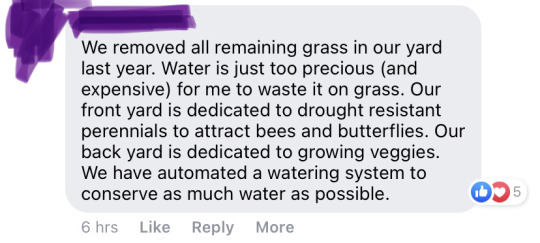
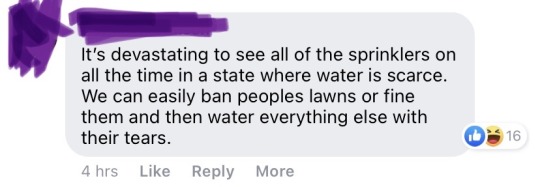
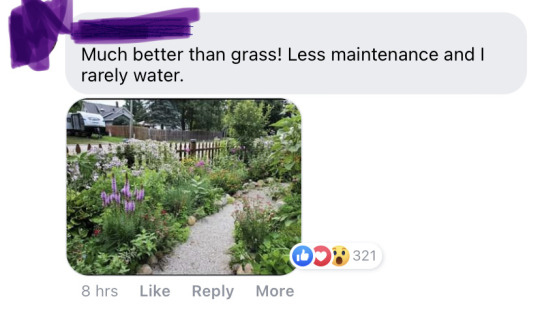


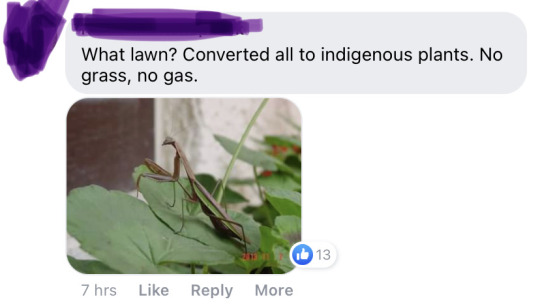
Most people are on our side here, even the so-called "boomers." We just have to be spreading ecological knowledge and practical means of creating useful habitat in back yards! Educate! Protect! Resist!
84K notes
·
View notes
Text
Finally finished the structural repair projects on my project boat, immediately sold it and picked up another boat.
A friend bailed on boat life so I've managed to get my hands on a beautiful 38 footer thats big enough for 2 (maybe 3 in the future!).
As I get familiar with the new boat I'm going to be documenting the projects and progress here.
I can show you how to live on a boat for cheap, and how to perform all the necessary maintenance and repairs without having to hire people to work on your boat, because that's the trap and if someone says "a boat is a hole in the water you throw money into" then you know they fell for it.
When the system is hostile just remember that you can opt out. You just have to get creative.

1 note
·
View note
Photo



Andrew Wyeth
Night Hauling 1944
Tempera on masonite
Bowdoin College Museum of Art, Brunswick, Maine
Night Hauling was painted by the twenty-seven-year-old Andrew Wyeth at the height of World War Two. Set against the Maine coast in Port Clyde, where Wyeth’s family summered, it depicts a shadowy lobsterman hauling in a trap under cover of darkness, the scene lit only by the figure’s concealed lamp and the water’s startling nocturnal phosphorescence.
6K notes
·
View notes
Text
These tiny solar cells work using a process much like photosynthesis--photons hit the dye, electrons are released and then passed on to a special conductive material that harvests the electricity. They're designed to work in lower light conditions than traditional solar cells and are powerful enough to power small electronics up to the size of a keyboard.
The idea is that these tiny solar cells could replace small batteries for low-energy electronics--they last significantly longer and produce 90% fewer emissions per unit of energy than traditional batteries. Solar cells also remove the emissions from shipping and replacing batteries, although there are potentially some additional environmental costs associated with their production.
This is a really cool step towards having electronics that are powered by renewable energy on an individual level rather than requiring batteries.
1K notes
·
View notes
Text
"Endangered sea turtles show signs of recovery in a majority of places where they’re found worldwide, according to a new global survey released Thursday [April 17, 2025].
“Many of the turtle populations have come back, though some haven’t,” said Duke ecologist Stuart Pimm, who was not involved with the research. “Overall, the sea turtle story is one of the real conservation success stories.”
The study looked at 48 populations of sea turtles around the world. Scientists measured the impacts of threats such as hunting, pollution, coastal development and climate change to the marine animals. In more than half of the areas studied, threats are declining overall, the study found.
But there are some exceptions. Sea turtle populations in the Atlantic Ocean are more likely to be recovering than those in Pacific waters. And leatherback turtles are not faring as well as other species.
Globally, leatherbacks are considered vulnerable to extinction, but many groups are critically endangered, according to the International Union for Conservation of Nature.
All seven of the regions where leatherbacks are found face high environmental risks, said study co-author Bryan Wallace, a wildlife ecologist at Ecolibrium in Colorado.
Leatherback turtles are famous for making the longest known marine migrations of any animal — with some individuals swimming as many as 3,700 miles (5,955 kilometers) each way. That feat moves them through a wide swath of regions and may expose them to unique risks, he said.
Meanwhile, green turtles are still considered endangered globally, but their populations show signs of recovery in many regions of the world, researchers found.
“By ending commercial harvests and allowing them time to rebound, their populations are now doing really well” in coastal waters off many regions of Mexico and the U.S., said co-author Michelle María Early Capistrán, a Stanford University researcher who has conducted fieldwork in both countries.
Sea turtles were protected under the U.S. Endangered Species Act of 1973, and Mexico banned all captures of sea turtles in 1990. But it took a few decades for the results of these actions — alongside efforts to protect nesting beaches and reduce accidental bycatch in fishing — to show up in population trends, she said.
Around the world, the problem of sea turtles dying after accidentally becoming entangled in fishing gear remains a major threat, said Wallace. New technologies are being developed to spare turtles, but they must be accepted and used regularly by diverse fishing communities to be effective, he added.
The survey was published in the journal Endangered Species Research and is the first update in more than a decade."
-via NBC News, April 17, 2025
1K notes
·
View notes
Text
"Litter on European beaches from the Baltic to the Aegean is falling, according to a new report.
If you’ve ever rented in Europe, or you’re a European and you live there, there’s a good chance you’ve had to comply with the strict waste control standards that require you to separate trash into several categories.
If that’s the case, and if it’s a pain in the neck sometimes, well crack a smile, because the hard work is paying off in one of the best, perfectly-tangible ways: how much trash is on European beaches.
In its latest EU Coastline Macro Litter Trend report, the Joint Research Center of the European Union has found that between 2015 and 2021 total beach litter has fallen 30%, with the biggest reductions seen in single-use plastic items (40%). The density was measured in pieces per 100 meters.

Pictured: Infographic via the JCR at the European Commission. Zoom or open image in new tab for better quality.
Fisheries-related items decreased by 20% as were plastic bags. The beaches that improved the most were concentrated around the Baltic Sea (45%) while the despite the enormity of the Mediterranean, it too experienced a dramatic decline (38%).
The report gathered data on macro marine litter trends across 253 beaches, and was pursuant to tracking the EU Zero Pollution Action Plan’s Target 5a, which aims to reduce plastic litter at sea by 50% by 2030.
That target would be well on the way to being met, if the report is accurate. Mediterranean beaches are subject to some of the highest densities of beach goers anywhere in the world, and for the improvement to be so dramatic, with 150 fewer pieces of litter found on average across every 100 meters of sand or stones, is a testament to more than just tight regulations."
-via Good News Network, May 7, 2025
928 notes
·
View notes

